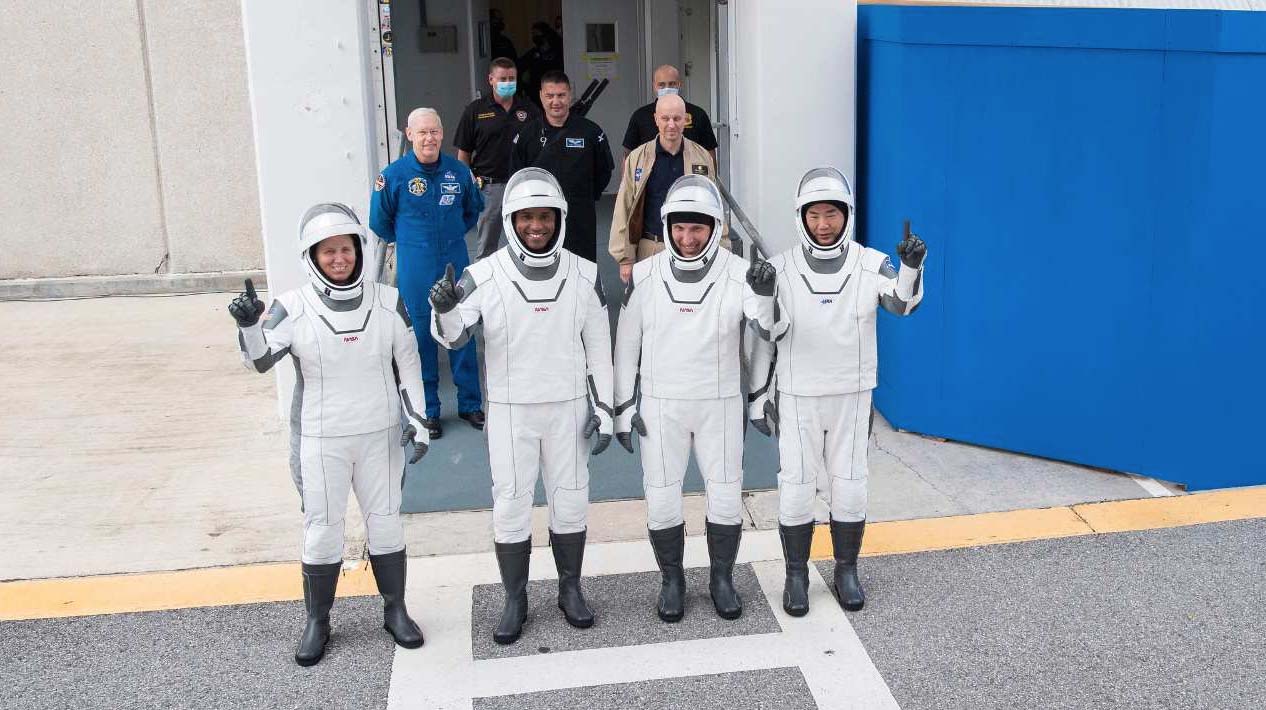The Dragon rocket has successfully blasted off from NASA’s Kennedy Space Centre for its mission to the International Space Station.
The crew was launched by the Elon Musk-owned private transport services provider SpaceX at 11.27am AEST today.
It is only the second time that the Dragon, and its Falcon rocket, have been used to send people to space.
NASA described the precise launch time as an “instantaneous launch window”, meaning the mission must leave on the dot if it wants to catch the station as it circles the Earth.
The launch of three Americans and one Japanese — all but one of them former space station residents — comes just three months after a pair of NASA test pilots successfully concluded SpaceX’s first occupied flight of a Dragon crew capsule.
“Game day!” tweeted NASA astronaut Mike Hopkins, the crew commander.
The crew led by Hopkins, a US Air Force colonel, includes physicist Shannon Walker and Navy Commander and rookie astronaut Victor Glover, who will be the first Black astronaut to spend an extended period aboard the space station – a full five to six months.
Japanese astronaut Soichi Noguchi will become only the third person to rocket into orbit aboard three different kinds of spacecraft.
It also marked only the second time in nearly a decade that astronauts were set to rocket into orbit from the US.

As nearby towns braced for an onslaught of spectators, SpaceX founder and chief executive Elon Musk disclosed via Twitter that he “most likely” has a moderate case of coronavirus, despite mixed test results.
NASA policy is that anyone testing positive for the virus to quarantine and remain isolated.
Musk remained upbeat. “Astronaut launch today!” he tweeted Sunday morning, adding that he had symptoms last week of a minor cold but currently felt “pretty normal.”
The astronauts named their capsule Resilience given all the challenges in 2020, most notably the global pandemic.
Rough seas prompted SpaceX to bump the launch by a day in order for its booster-landing platform to reach its proper position in the Atlantic. The company plans to reuse the first-stage booster for its next crew launch, next spring.
NASA turned to private companies to haul cargo and crews to the space station, following the 2011 retirement of its space shuttles. The space agency will save millions by no longer needing to buy seats on Russian Soyuz capsules.
NASA’s other crew transport provider, Boeing, has yet to launch astronauts. The company is still working to overcome software problems following last December’s marred space debut of its Starliner capsule.
Source: 9news with AP












